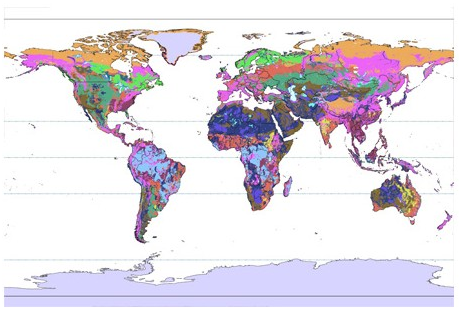Briefly describe the concept behind a TEM detector. (2.4)
What will be an ideal response?
Answer: Most of the size of an atom consists of the cloud of electrons that orbit the nucleus. If many electrons exist in a small area around the nucleus, then there is a good chance that electrons fired in the TEM will collide with an orbiting electron and bounce off it, rather than continuing through to the detector. If, however, the electrons are widely spaced around a nucleus, then the fired electrons may pass through the atom without hitting any obstacles. This means that the shadows in the TEM image may not represent all of the types of atoms in a mineral, but rather only the atoms with closely clustered electrons.
You might also like to view...
In the world map below the color that represents soils that swell and shrink excessively is

A) pink.
B) light green.
C) medium blue.
D) purple.
The presence of a thin film of water on the surface of sand grains results in ________ angle of repose
A) a higher B) a lower C) no change in the
Clouds ________ the daily range in temperature
a. completely control b. have a large effect on c. have absolutely no effect on d. have little effect on
Built in the 13th Century, Sweden's Kalmar Castle is one of Europe's best preserved castles. Its strategic location along the country's southeast coast earned it the reputation as the "the Lock and Key of Sweden"
Indicate whether the statement is true or false